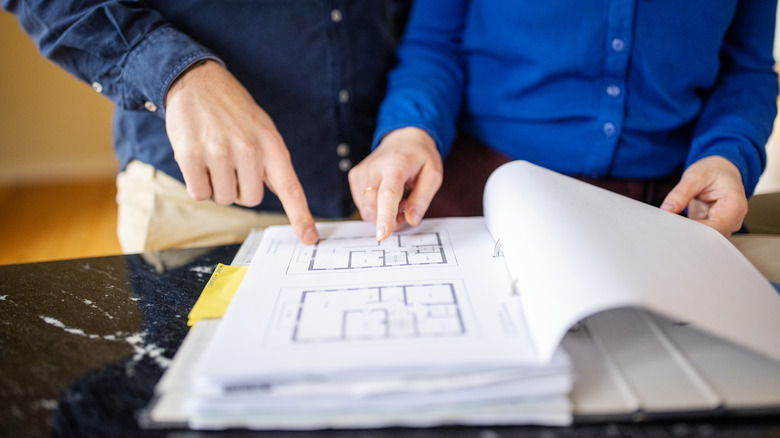What A Real Estate Agent Recommends Focusing On When Touring A Home
Zeroing in on a home that checks all your non-negotiables requires momentous legwork — and a presence of mind. After all, staying focused when encircled by peppy sellers, staged furniture, and free cookies can be difficult. However, overlooking major deal breakers can cost you dearly and make you regret your home-buying decision. To thwart such outcomes, develop the keen eye of real estate agents and focus on what's important. For starters, rather than falling in love with (or detesting) a home's decor, check if the floor plan complements your needs. Dawn Rae, a broker-owner, elaborates to U.S. News & World Report that new homebuyers should consider whether the layout works for their lifestyle and whether there is enough space. If it does, explore the property's overall vibe, including its smells, natural lighting, outdoor seating, structural maintenance, and the need for any significant repairs.
Location is equally important, especially from a safety and accessibility perspective. The property must offer easy access to essential amenities, including schools, highways, and recreational activities. Another factor that can't be overlooked is curb appeal — yours and your neighbors'. Make sure the prospective home's roofs, gutters, eaves, and front doors are in tip-top shape. And don't ignore the neighbor's upkeep, as it not only defines the area's vibe but also signals if things can get ugly (or raucous) down the road. For instance, cluttered and unkempt yards may signify trouble at home or may later become a root cause for problematic pest infestations in your residence.
Don't ignore the floor plan and build quality
In an Apartment Therapy interview, David A. Palmieri, a New York-based licensed agent, says the first thing he notices about a home is the flow of the floor plan. "I look at whether the rooms are functioning as they should be and if the home is livable," he said. This is important, as every family has personalized needs, necessitating a layout that responds accordingly. Unfortunately, many homebuyers disregard their must-haves since they get too caught up in typical selling points, like trendy designs, decorative lights, flashy finishes, or fancy backsplashes.
"We have to bring our clients back to reality and remind them ... it's not as easy to change a layout or add square footage," Frank Vicente, a realtor, told the Lansing State Journal. At the very least, the property must provide the requisite room size and number. Even if you think you can make the changes by moving back or demolishing a wall, remember the added costs may ultimately make the place unaffordable. This is less likely to be the case for any design or furnishing upgrades, as they are generally more economical, straightforward, and delayable if you exhaust your budget. Build quality matters, too, and can often be judged based on the workmanship and finish quality of moldings, window treatments, kitchen cabinets, and baseboards, to name a few. Similarly, features like using 2x6 construction (as opposed to 2x4), concrete sidings, and trusses indicate quality design.
Be watchful of lighting and structural damage
The first thing any realtor does after unlocking the door is turn all the lights on to make the space look roomier and brighter. But this shouldn't stop you from taking stock of natural lighting and determining whether it matches your palette. Moreover, now's also the time to look for flickering or dim lights, as they may signify faulty wiring. Exposed or old wires (check the basements, too), malfunctioning HVAC systems, or leaky pipes are all causes of concern since they may need a replacement in the short run.
Also, look for hidden water damage. Although decluttering and painting the space is probably at the top of your mind, getting rid of mold and mildew, especially on the roofs and ceilings, may not be on your to-do list. Checking running taps and faucets for signs of discoloration or odors is crucial, too. Moreover, watch for major structural damage to the foundation and walls, as repairing them can be eye-watering. "If you see cracks or sinking in one corner, the house likely does not have good bones," Bill Samuel, owner of the home-buying company Blue Ladder Development, told Family Handyman. Take the corner as your vantage point and check for the distance between the wood and the baseboard — the greater it is, the higher the likelihood that it might not be able to be refurbished any more and is due for a replacement, aka more renovation.


